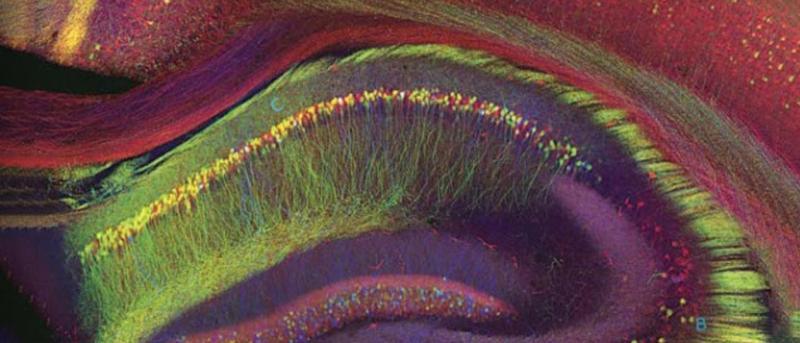Scientists discover the on-off switch for human consciousness deep within the brain
Scientists discover the on-off switch for human consciousness deep within the brain
Researchers at George Washington University are reporting that they’ve discovered the human consciousness on-off switch, deep within the brain. When this region of the brain, called the claustrum, is electrically stimulated, consciousness — self-awareness, sentience, whatever you want to call it — appears to turn off completely. When the stimulation is removed, consciousness returns.
The claustrum seems to bind together all of our senses, perceptions, and computations into single, cohesive experience. This could have massive repercussions for people currently in a minimally conscious state (i.e. a coma), and for deciding once and for all which organisms are actually conscious. Are monkeys conscious? Cats and dogs? A foetus?
When it comes to human consciousness, much like the rest of our brain’s operation, there isn’t a whole lot in the way of actual scientific knowledge. Despite a century of “modern” neuroscience, we still only have a rough sketch of how the human brain works. Most theories, though, generally agree that consciousness is probably created by a part of the brain that integrates activity from different regions of the brain into a single, holistic experience.
To put it in (very loose) computing terms, this seat of human consciousness would be somewhat like a CPU; without it, you’d just have a bunch of different parts that are theoretically functional, but not really capable of getting anything useful done.
The research, led by Mohamad Koubeissi at GWU in Washington DC, was originally tasked with analyzing a woman with epilepsy. The neuroscientists were stimulating regions of the brain with electrodes in an attempt to discover where her seizures originated from. Then, when they stimulated the claustrum — a thin region of the brain underneath the neocortex — the patient slowly lost consciousness. When the stimulation was removed, consciousness returned. When the claustrum was stimulated, the woman just stopped whatever she was doing (speaking, reading, moving) and stared blankly into space; when stimulation was removed, she continued as normal with no recollection of what had just happened.
Speaking to New Scientist, Koubeissi said: “I would liken it to a car. A car on the road has many parts … but there’s only one spot where you turn the key and it all switches on and works together. So while consciousness is a complicated process created via many structures and networks – we may have found the key.
As you might expect when it comes to bleeding-edge neuroscience, there are some caveats to the research — most notably, the study only looked at the brain of one person, and due to her epilepsy (and previous removal of part of her hippocampus) she doesn’t necessarily represent a “normal” brain. In short, more research needs to be done — and following the publishing of this paper, you can be guaranteed that there will be more research into the claustrum.
If it turns out that the claustrum is the seat of consciousness, the repercussions could be monumental. Consciousness — the idea that we are somehow greater than the sum of our dumb animal senses — has always been a rather sticky concept. The general idea is that consciousness is one of the key factors that makes us human — that imbues us with humanity — rather than merely roaming around, responding to hard-coded instincts.
Curiously, even though stimulating the claustrum removed consciousness, the patient was still awake. Consciousness is often discussed in relation to wakefulness, but seemingly they are not as closely connected as originally thought. This new research could also inform us about anesthesia and comas — two other areas of medicine we still know very little about.
Finally, it’s worth pointing out that the claustrum is believed to be present in all mammalian brains. Does this mean that all dogs and cats are conscious and self-aware? When the human (or other mammalian) fetus develops a claustrum, does it become conscious? What about other, simpler animals that don’t have a claustrum? Interesting questions that neuroscientists are no doubt be racing to answer.
By Sebastian Anthony/Extreme Tech
Be the first to post a message!
